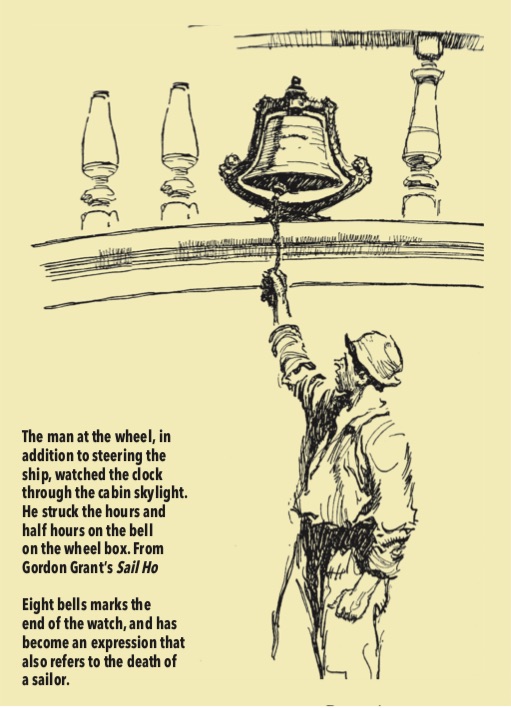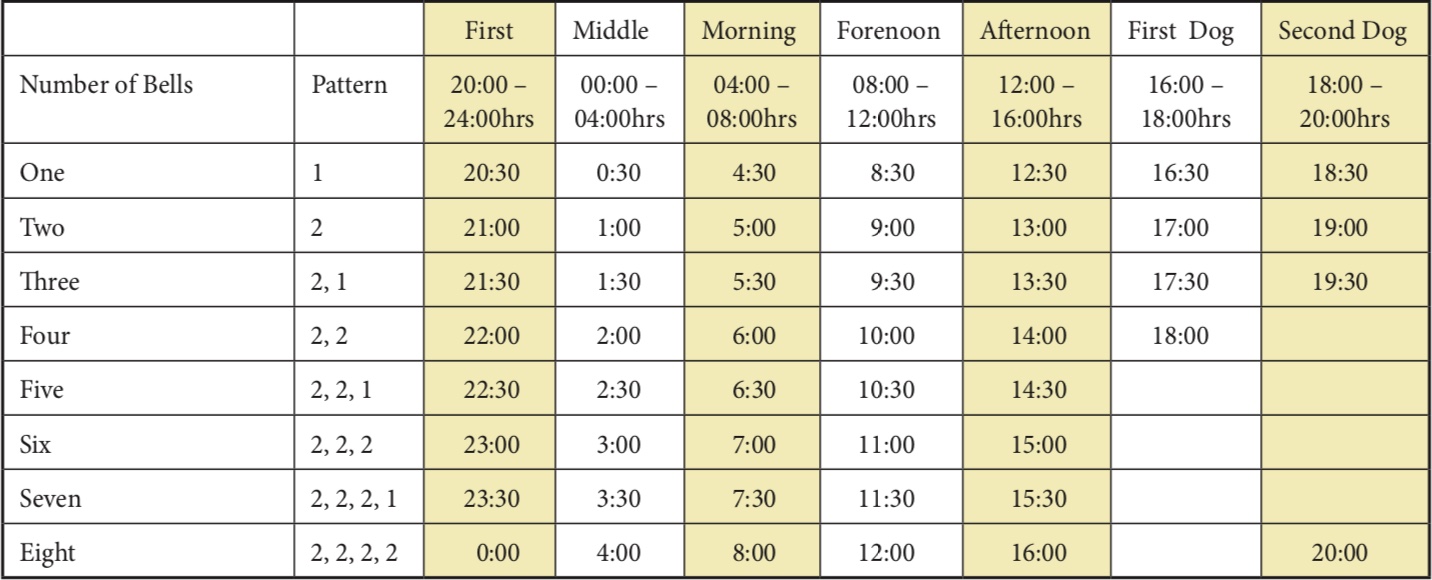The ringing of the ship’s bell was an integral part of life at sea for sailors both as a time keeper and warning signal. Still is, for some.
Bells have been used on ships since at least the late 1400s and a ship’s bell is still required in vessels over 20m in length (65ft). A brass bell is an efficient sound signal and the International Rules for Prevention of Collision at Sea require a bell to be rung for vessels at anchor or aground in restricted visibility.
Boats under 20m need to make an “efficient sound signal” every two minutes in these conditions, and so many boats still have a ship’s bell.
The first record of a ship’s bell was on the British Grace Dieu in 1485; an inventory of the Regent in 1495 notes she carried two “wache bells”. Henry Teonage, naval chaplain aboard HMS Assistance and HMS Royal Oak from 1675 to 1679, noted in his Mediterranean diary: “so great a fog that we were fain to ring our bells, beat drums, and fire muskets often to keep us from falling foul one upon another.” Ringing the ship’s bell became the custom in fog but it was not until 1858 that the Royal Navy made it part of shipboard regulations.
By then bells were commonplace and it is as the time keeper aboard ship that most sailors would associate the ship’s bell. The bell would be rung every half hour during a standard four hour watch up to eight bells (see table).
The 30 minute practice stems from the use of a half-hour sand glass or ampoletta, which would be turned as it ran out. Columbus records using these on voyages to keep the regular night watches and cites the ancient canonical monastic hours that gave rise to the sailor’s watch system. From the time of the apostles monks had observed and standardised prayers seven times a day, and this is most likely from where we get the seven watch system.
So when it was introduced at sea the bell was already a well known instrument of time-keeping and a simple way of recording the passage of time aboard that everyone could follow. When a ship’s bell is rung it is done in pairs. Thus: ding-ding, ding… would signal one and a half hours into a watch; ding-ding… ding-ding would be two hours and so on. All watches end in eight bells except the first dog (or dodge) watch which ends in four, after which the second dog starts. The dodge watch allows a ship’s company to enjoy an evening meal and also moves the whole watch system forward.
Crews tend to be split into three watches, so they are on watch for four hours and then off-watch for eight. The two hour dodge (dog) watch means that every day your watch system changes, so on day one if you were on First watch (you’ll also do forenoon and 2nd Dog) then on day two you would do the morning watch and the 1st dog; day three would start with the middle watch (the afternoon and the first) and from then the system repeats. The system means that that sailors don’t have to do the same watch each night, especially the middle, or so-called graveyard watch which is the one that most disrupts sleep patterns.
Aside from time-keeping and warning the ship’s bell could also be upturned, filled with water and used as a baptismal font. DMH
Below are how eight bells should sound:



